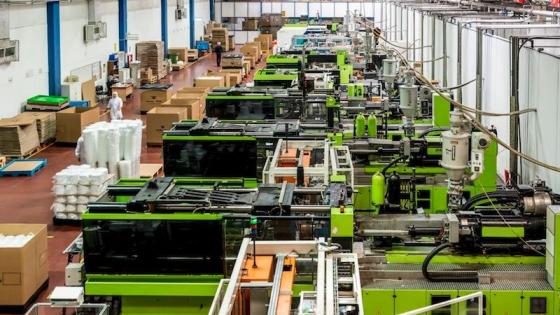Industrial policy is back in fashion. Theresa May, the British prime minister, and Donald Trump, the US president, have both promised to boost manufacturing production with their industrial strategies; the ‘Made in China 2025’ initiative promises the same in China. Other emerging markets are hoping that industrial policies will allow them to escape the 'middle-income trap' and join the club of rich countries.
Upgrading of the national production structure features prominently in industrial policies. And rightly so, as research has shown the importance of specialisation for a country's future growth pattern (Lucas 1988, Hausmann et al. 2007). Although much research has investigated the drivers of the national production structure at the macro level, much less is known about the determinants of product upgrading at the micro level.
Recent research suggests that inflows of foreign direct investment (FDI) make it more likely that host countries upgrade production. For instance, Harding and Javorcik (2012) and Swenson and Chen (2014) have found that presence of foreign affiliates affects the unit value of exports in their industry. Unit values, however, are a highly imperfect proxy for product quality as they may also be capturing production costs, market power, or noise due to both aggregation and measurement error.
In recent work, we move away from unit values to examine the link between FDI presence and the complexity of new products introduced by domestic firms (Javorcik et al. 2017). We focus on Turkey, a country that had experienced a spectacular surge in FDI inflows during the 2000s, and is one of the few countries to have dramatically improved the sophistication of its productive structure in recent decades (Hidalgo 2009, see also Figure 1).
Figure 1 Evolution of product sophistication in Turkey
Source: BACI and TurkStat SBS; authors’ calculations.
Notes: The left-hand axis measures product sophistication of domestic manufacturing firms, while right-hand axis does the same for foreign firms operating in Turkey and the aggregate exports of Turkey.
Lego buckets and product complexity
We capture product complexity using a measure proposed by Hausmann and Hidalgo (2009), who relate the concept of product complexity to the extent and exclusivity of capabilities needed to produce a given product. As capabilities are neither directly observable nor measurable, in this method they are inferred by jointly exploiting information on the prevalence of a given product in the countries’ export baskets, and export diversification of countries that export it.
This concept can be illustrated with a Lego analogy. Imagine that a country is represented by a bucket of Lego pieces with each piece representing the capabilities available in the country. The set of products (Lego models) a country can produce depends on the type, diversity, and exclusiveness of the Lego pieces in the bucket. A Lego bucket that contains pieces that can only be used to build a toy bicycle probably does not contain the pieces to create a toy car. However, a Lego bucket that contains pieces that can build a toy car may also have the necessary pieces to build a toy bicycle.
While two Lego buckets may be capable of building the same number of models, these may be completely different sets of models. Thus, determining the complexity of an economy by looking at the products it produces amounts to determining the diversity and exclusivity of the pieces in a Lego bucket by looking at the Lego models it can build (see Hausmann and Hidalgo 2009 for more details).
Anecdotal evidence
Anecdotal evidence suggests that foreign affiliates operating in Turkey may be stimulating product upgrading among their suppliers. Consider the case of Indesit Turkey. Indesit is an Italian white goods producer – recently acquired by Whirlpool – active in Turkey since the 1990s. Its plant, located in Manisa, produces refrigerators. At the outset of its operations in Turkey, Indesit imported most of the components needed for production of the final products. Now, Indesit sources locally almost all of the main components. More than half of its supplier base is in Turkey, mostly in the same industrial district as its Manisa plant. Geographical proximity to suppliers is important for keeping down transport costs and allowing more productive collaboration with suppliers. Indesit regularly conducts audits of its suppliers and also helps them to start production. Its resource of engineering knowhow and experience created by previous experience working with local suppliers in other parts of the world is shared with Turkish business partners.
In 2012, Indesit built a new plant producing washing machines. To become a supplier to this new plant, a local company purchased new presses and automated its production process. This allowed the company to start producing a new and more sophisticated product, and increase efficiency and production volume. It became the only supplier to Indesit in Turkey capable of producing the flange of a washing machine basket.
Indesit played a central role in this upgrading process: it has shared essential tacit knowledge, information processes, instructions and control procedures with the local company. This stimulated and supported the supplier’s complexity upgrading.
Figure 2 shows the complexity ranking of three stainless steel products: a pot scourer, a sink and a washing machine flange. The flange is the most complex of the three products. It is twice as complex as the sink, which is the other steel product with deep drawings. Stainless steel components like a flange need to be produced with no aesthetic defects by an 800-1,000 tonne metal press. The component’s drawings are statistically controlled for correct assembly with the rest of the washing machine basket. They also need to withstand the stress of between 1,000 and 1,400 revolutions per minute while remaining within a certain range of vibration and noisiness. These features of the flange show why it has the highest level of complexity of the group of three stainless steel products.
Figure 2 The complexity ranking of three stainless steel products
Source: BACI; authors’ calculations.
Notes: HCPA is the product code. Kp13 is the label of the complexity indicator which is a standardized measure and varies between -2.6 and 2.6.
The relationship between FDI and local product complexity
Inspired by this anecdotal evidence, we examine the link between the presence of foreign affiliates and production upgrading by Turkish firms located in the same region and active in the input-supplying industries. We control for unobservable heterogeneity by including region-year and industry-year fixed effects.
The presence of foreign affiliates does not seem to affect the propensity of Turkish firms to innovate. Interestingly, however, it is positively correlated with the complexity level of products newly introduced by Turkish firms active in the supplying industries and located in the same region.
The estimated effect is economically meaningful. A 10-percentage point increase in foreign presence translates into the average complexity of products newly introduced in the supplying industries increasing by 0.297, which implies moving about halfway from the production of pot scourers to producing stainless steel sinks. In a similar way, an increase of about 17 percentage points in FDI in the relevant sectors would be necessary to move from the production of stainless steel sinks to the production of washing machine flanges.
When we investigate the change in the overall complexity of the firm’s portfolio of products, accounting for unobservable firm-level heterogeneity and addressing the possibility of reverse causality, it corroborates the finding of a positive relationship between the presence of foreign affiliates and increasing sophistication of Turkish manufacturers in supply industries.
FDI as catalyst
Our findings matter for policy. Enhancing the economy’s productive capabilities across an increasing range of more sophisticated manufactured goods is an integral part of economic development (Rodrik 2006). Our results imply that FDI inflows can act as an important catalyst for this. Thus, there is room for investment promotion activities, a policy that is effective in developing countries (Harding and Javorcik 2011). In contrast to many other industrial policies, investment promotion (as distinct from fiscal incentives) is relatively inexpensive and causes few distortions. Therefore, there is little downside even if the government gets it wrong.
References
Harding, T and B S Javorcik (2011), “Roll out the red carpet and they will come: Investment promotion and FDI inflows”, Economic Journal 121(557): 1445–1476.
Harding, T and B S Javorcik (2012), “Foreign direct investment and export upgrading”, The Review of Economics and Statistics 94(4): 964–980.
Hausmann, R and C A Hidalgo (2009), “The building blocks of economic complexity”, Proceedings of the National Academy of Sciences 106: 10570–10575.
Hausmann, R, J Hwang and D Rodrik (2007), “What you export matters”, Journal of Economic Growth 12(1): 1–25.
Javorcik, B S, A Lo Turco and D Maggioni (forthcoming), “New and Improved: Does FDI Boost Production Complexity in Host Countries?”, Economic Journal.
Lucas, R J (1988), “On the mechanics of economic development”, Journal of Monetary Economics 22(1): 3–42.
Rodrik, D, (2006), “Industrial development: stylized facts and policies”, Kennedy School of Government.
Swenson, D L and H Chen (2014), “Multinational exposure and the quality of new Chinese exports”, Oxford Bulletin of Economics and Statistics 76(1).








